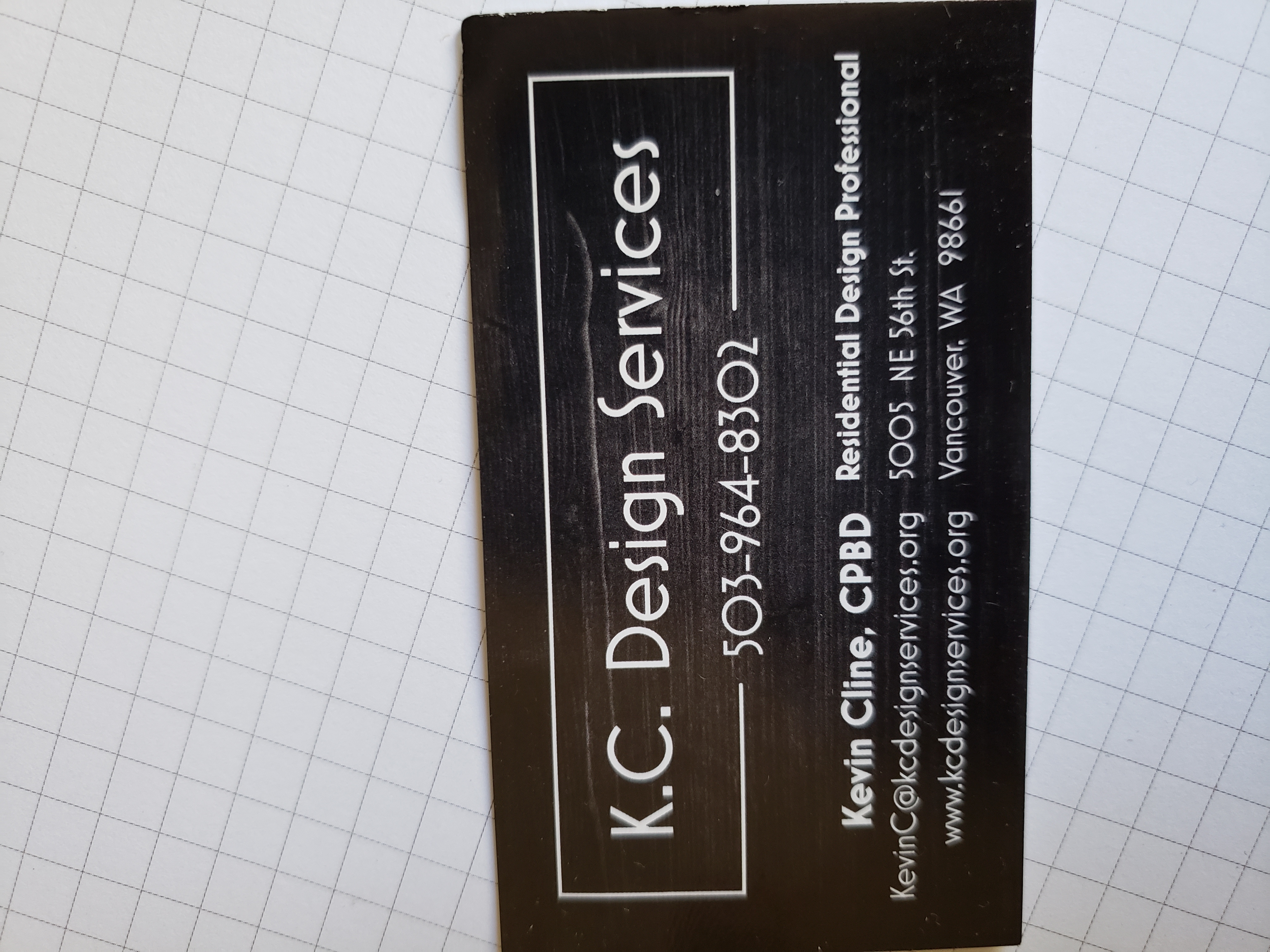The AIBD Monday Minute, a weekly email to residential architects, designers, engineers, and builders, asked the question, “What is the best path or suggestion to give a client looking to find a decent contractor?”
We forwarded the question to our subscribers and asked them for suggestions. Their responses were outstanding!
Before we get to the meat of the discussion, the Monday Minute includes a short video (5 minutes) that hits the highlights of this article and points to other sources for advice outside of this post.
As it turns out, the advice provided by our contributors is not only helpful for professionals consulting with clients. The replies are pretty darn relevant for those who are homeowners, or prospective homeowners, looking to have a project constructed.
One of the great outside sources we found (mentioned in the video above) is The Second Studio podcast, episode #245 – HIRING A CONTRACTOR WITH SAMANTHA BURTON, Vice President at Young & Burton (1:51:22).
Samantha discusses what a General Contractor does, the typical team members who are involved with a building project, the differences between constructing modern-style buildings and traditional ones, tips for hiring a Contractor, Architect, and Contractor teamwork, the importance of construction drawings, and much more.
For the professionals
There are many factors to consider when it comes to finding a contractor to construct a new home. An excellent place to start is to help your client narrow down what type of builder would be best suited for your needs.
The first thing is whether or not the homeowner plans on doing any of the work themselves. It might seem like an unimportant detail, but it’s pretty significant because some builders require more involvement from homeowners than others and may not be the best fit for those looking to take on more of a DIY approach.
Budgets will also need to come into play when narrowing down builders, as some may have higher rates than others and work better with specific budget ranges.
The last thing that should factor in is whether or not you want your builder solely focused on building your home or offering other services.
It’s essential to consider these factors and others when narrowing down builders so that the homeowner can find someone with a team of qualified professionals.
This post will cover some of the most important things you’ll want to know about hiring builders and how they work with homeowners in different situations.
For the homeowner/client
Choosing a contractor for your home can be a daunting task. There are so many different contractors out there, and you want to make sure that you choose the best one for your needs.
Hiring someone who is reliable and will do quality work can help you avoid costly mistakes down the line, so it’s essential to take this decision seriously!
This blog post discusses some of our favorite tips on finding the perfect company for your project and why working with a Certified Professional Building Designer or otherwise registered design professional is critical.
We begin with the obvious
The obvious suggestion is to ask for referrals. But from where? Our community has several exciting and creative ideas.
William Burton, MDI & Associates, LLC, Texas

Word of mouth is the best. I have several contractors to refer who I trust and have worked with and. However, should the client want other options, my advice is to ask those who have had work done and have had a good experience within their community.
Annette McCleery, Annette McCleery Building Design, North Carolina.
Ask questions. Ask your neighbors for referrals. Ask school, church, grocery store acquaintances, local lumber suppliers for potential GC names.
Listen to past clients who might have used a particular contractor. Visit your project job sites. Are they clean and neat, working efficiently? Would YOU use the same crew again if the choice was yours to make?
Clients NEED to check references a potential contractor might provide. Everyone will have had a problem along the way. Were their past clients happy with the practice used to address issues?
Clients need to make sure they can discuss their project and feel comfortable asking questions of the potential contractor. If a potential GC brushes you off now, there will be no getting their attention when construction is full speed ahead.
Do you have the same personality as the person who gave you the GC’s name? Referrals are only so good. One client asked questions because the site was graded, so stormwater was in their crawlspace. A past home had mold issues, and they did NOT want to start over.
There were other items, such as rude subcontractors. Who answered every question with, “Not an issue,” or blamed someone else for errors. GC wound up storming off the job site, ordering subs to not go back to work with clients. I spent the better part of a Saturday just identifying areas GC did not follow the plans.
Luckily the clients found they had an incredible network of neighbors who could direct them to others to finish the work, paying out of pocket for what the GC said was complete. Other neighbors sheepishly admitted they knew the GC was questionable…but kept quiet.
Another client worked with the same GC around the same time. He worked a full-time job and came home at the end of the workday. Observed, griped about any doubts to his mother, but did not question the GC. The GC stayed to complete the project.

Richard Emigh, LUD2, California
A) Ask for at least three past clients to contact.
B) Talk to nearby homeowners about who they have used and recommended for the work and why.

Kevin Cline, K.C. Design Services, Washington
The best contractor is always one that you can verify their work. Ask friends if they know somebody who has done an excellent job in your area.
Set up a meeting and get to know a prospective builder before even arranging any work. Is this somebody you feel comfortable working with, first and foremost?
This project might be a “job” for a prospective contractor, but it’s much more of that for you. So make sure you are comfortable doing business before inviting them into a closer relationship on a project that has a more personal component for you.
Use the local builders association as a resource.

Kerrin Hester, Hester Home Builders, Kentucky
Check with your local home builders association and talk to several builders, then choose the one best suited to your needs.

Brooke Carpenter, Residential Engineering Solutions, PLLC, North Carolina
I always suggest searching the directory of the local Home Builder’s Association. These are usually available online.
While this doesn’t weed out every lousy contractor, it tends to weed out most of them.
I always recommend that they interview a minimum of three contractors.
I believe that it is as much a relational issue as a monetary or contractual one.
And please check references for each contractor. I am amazed at how some horrible contractors in our area tend to continue to get work. No way any new customers contacted a past one because they indeed would have been told to run away.

Mark Bostic, Square One Design, South Carolina
In the past, I have relied on the local home builders association and, for remodeling, have used their remodelers council. We have a robust association in central South Carolina, but even so, as the older ones retire, you have to form new associations over the years.
As you maintain your network, I suggest you refer the guys who refer to you. I mean, if they are smart enough to send business your way, they must be more intelligent than the average guy!
The most important part of the whole referral thing is to remind your customer that you are giving them a suggestion, not picking a contractor for them. There are so many variables that can affect the customer contractor relationship that they need to talk to a couple and get an excellent personal feel for their candidate.

Mike Keesee, Total Solutions Group, Florida
The best suggestion on finding a decent contractor is for your client to ask the builder for referrals of past clients.
Of course, he should only give you the “good” ones, but you would be amazed by the number of clients that the builder thought they had a great build with, but not from the client’s perspective.
Also, they should start their search at their local home builders association.
Stake out an existing job site.

Greg Bartzen, CAD.Jockey1 Architectural Design Services, Missouri
In some states that I operate in, I will offer specific GC’s to the client, which is trusted souls I have known for years – I am a former licensed ‘and bonded general residential ‘and commercial contractor. Suppose the client is a seriously studious sort with no experience and wants the best quality deliverables. In that case, I typically send them on ’30-day exercise’ by having them seek out 3 to 5 homes in current developments where the general scope is similar to theirs. Once this is known, camp-out on Saturdays and Sundays once a house dried-in, or better after interior trim. On these days, you can count on an owner to visit the job site. Here is your opportunity to introduce yourself and get the finest contractor reconnaissance available! More importantly, maybe you make a new relationship in an otherwise waning world of Facebook and Twitter!
Once you obtain two to three names worth checking into, start by calling them, interface, and establish a thumbnail relationship to ‘compare.’ After this 1-week process, do the obvious step: Call your state registrar of contractors to check their license status and 3-year complaint history. However, having a resolved status complaint MAY not be taboo in today’s cultural dilemma of some clients likely being over-judgmental – dig into a resolved complaint ‘and read state officer’s written markup ‘and ruling.
Once completed, now is the time to choose two or three to invite to bid and make the final selection.
CLOSING TIPS:
1) Big advertising by a General Contractor (GC) = a more significant bid.
2) A better GC Relationship = a better project. So the three to five percent higher bid usually = cheaper overall.
3) Be wary of eager GCs.
4) If the GC is three to five percent higher, but you can lock high material package costs with a five percent down, hire that one – but ONLY if they are licensed, with a clean record, for at least ten years.
5) Call bonding companies of selected bidders to check their status!!
Talk with your local lumber supplier.

Contact a local salesperson at a lumber supplier for a suggestion. They usually have a good pulse on who the best contractors are in the area.
Be specific about the materials, expectations, and outcomes.
Damon Rye, DR Home Design and Consulting, Arkansas.
Become educated and informed of your requirements and results. Get reliable references. Make sure your quotes include all of your needs and you are satisfied that the contractor will accomplish your desired outcome.
Michael Plunkett, MP Design Group, Florida.
I have come to find it is best to be as specific as possible about the materials and finishes. If you do not know the exact materials, use an allowance for flooring, electrical, cabinetry, and cabinets.
Make a sheet with allowance numbers for each contractor to have the same information. This way, you can talk to a few people for some quick estimation ballparks.
Describe the length of time for the project, and if it passes that date imposes penalties. It has to be in writing before starting. This way, you can communicate with three builders who do not know one another. Using more than three is a waste of time for builders and not fair if you were to ask me.
Be wise enough to understand that when you ask a builder for a price, they ask their subcontractors. It is not uncommon for different builders to accidentally ask the same subcontractors for their costs. It happens, and it’s ok, but if too many builders are involved, any quality builder would know better than to waste their valuable time.r
After speaking with three separate builders who were all given the exact instructions to bid using the allowances, you get the feel of honesty and the most professionalism. Then consider who you get along with best. You will have to see this person or communicate with them for the next six months to 12 months, depending on the scale of the project.
Seeing how everyone follows simple instructions will tell you a lot. Some builders like to razzle and dazzle you with underpriced bids, and when you get the job, they charge extra for the products you want. Some do this on purpose. Some do it because they can. You become vulnerable when committing to a financial endeavor.
Always allow an extra percentage of funds you and your client know are accessible if the builder comes up with some reason to charge more during the construction.
Ask for current references. If the projects were a long time ago, that does not tell you the recent business activities. You want recent referrals, within the last two or three years is ok. If a builder can only tell you about that one client from 15 years ago, that should be all you need to know and move on.
Once you feel who will be the best choice, it’s usually not the least expensive bidder. Know that if surprise extra costs occur during construction, that is horrible and can make a client have financial issues if they’ve tapped out their loan approval. Always allow for a surprise, so you don’t have to use all the money borrowed for a construction loan. It costs a tiny bit more to borrow more money, which gives the client a safety net. Keep that part a secret. Never tell the builder there is an extra fund available for unforeseen situations.
When you select the builder you want to work with, take the time before signing any agreement to have the builder or yourself firm up your allowances. You never want to allocate $5,000 for, say, cabinets, then come to find out they are $35,000.
I would never accept any agreement that charged you a flat number per square foot of the structure. People who decide to do this way, and your builder said it is $300 per foot. So then you decide to make a twelve-foot bedroom two feet wider and come to find that it would cost a whopping $7,200 extra. In reality, the price for the additional material is most likely less than $1,000. This strategy will make your builder rich. This strategy is used at dinner with drinks, a toast, and a flat per foot cost verbal agreement. Suppose you make a non-living area larger, like a garage. The cost is minimal, with no granite flooring, no cabinets, or plumbing, in a garage. A garage and patio cost less to build per square foot.
Another method is to do the first exercise by getting three separate bids. It is easy to see how professional and how the builder treats you during that preliminary bid stage. If you decide you like the builder, agree they are honest. Then another way to approach the project is to have a cost of materials and labor plus a percentage amount decided to add for the builder. Some builders will ask for 12% or maybe 20%. Make sure you understand that you will pay the builder a lot if you pick costly products, like gold-plated plumbing fixtures. That can make people annoyed, but that happens.
Make sure there is a penalty listed, say something like after nine months or whatever time makes sense for the project’s complexity. Say it was 15% for the management cost, after nine months from the permit issue date, stipulate in writing a schedule of the 15% being reduced slightly as ten months arrive, then so on.
Most importantly, make sure you’re dealing with someone who has been around the block and has successful recent projects, and they can put you in verbal contact with their previous and current clients. If a builder has the confidence to give you the phone numbers of recent projects, that alone says a lot.
When I was first starting, and a client asked me for a referral, I opened my computer and my projects directory. I ask them to pick any random client, and I would give the potential client the contact information of any client they chose. I never lost a single job that way.
Building Designers should build a list of contractors to refer, based on years of relationships built on trust.
Ask your local building department.

Michael Battaglia, Michael J. Battaglia Residential Design, Ohio
There is no one golden rule on how to select a decent contractor. The answer comes in many forms and many times over the decades. The typical answers of checking the contractor references always show up. I disregard those. The contractor is going to give you his past successful clients.
Another is to check his affiliations. Is the contractor in the local chapter of the National Association of Home Builders? The contractor can be, but that could only mean he has paid their dues.
I usually go in a different direction. I will usually suggest a client call the building department is governing the construction of the project. When contacting the building department, the Building Official can answer two questions.
(1) How many projects does the contractor have under construction in their Jurisdiction? By knowing a client can discuss the time frame for the contractor to dedicate to their project.
(2) When did the project begin? By having this information, the client knows if the contractor has been performing as advertised. If projects have been lingering, there may have also been inspection problems.
Trust can be a significant factor in selecting a contractor, not just price or industry affiliation.
The other recommendation I give to a client on selecting a contractor is, do you trust them?
I tell the client the contractor has your checkbook. Once you start down the construction path, it is difficult to stop spending.
If it is a remodel or renovation project and the client still occupies the home, ask another question. Do you trust them around your children and personal belongings?
Seek out multiple sources for referrals.

Jacquilla Gillette, Edge Engineering, Tennessee
When assisting a client in finding a good contractor, often I suggest several different methods:
Check with their designer/architect if they have worked with anyone specific before.
Check with local construction supply businesses.
Drive around their neighborhood and look at any homes currently under construction, and get a card.
Look online for contractors in their area and make a small list of the few they’re interested in interviewing. Research any reviews and references they have available.
Talk to friends, family, and co-workers to see who they know.

Jeffrey W. Moore, Bayou Home Design, Inc., Louisiana
There are many online suggestions/guides to selecting a contractor.
In addition, consult the state licensing board to see any issues with a particular contractor.
The local inspection department may be willing to offer guidance.
Word of mouth is one of the best ways, but it cannot be relied upon only.
Narrow your selections down to three contractors you are comfortable working with for the project duration.
Check references, but do not automatically think an excellent or poor reference negates consideration.
Check with local supplies and subcontractors. They will know as much as anyone about local contractors.

Paul Ladner, Ladner Design & Construction, California
Being a building contractor myself, this is the best advice I can give. It boils down to due diligence.
Choose a contractor who is licensed and has been for at least ten years – 15 is better. It would help if you had someone with a depth of experience. There is no substitute for experience. Check the license is current with the state contractor’s board.
Get certificates of insurance for workers comp and liability for the homeowner’s protection.
Read the contract over three times, be clear about what is included and what is not. If you don’t understand something, ask. For my design clients, I recommend that I review the contract with them and make appropriate changes if necessary.
Don’t be put off if the contractor asks for a fee for the bid. Putting a proposal together for a large project is a lot of work, so it’s reasonable for a contractor to get paid for this work. Usually, this cost is deducted from the contract price if you accept the bid. Free bids, like free legal advice, are probably not reliable. Beware of low proposals. A careful bid – even if it costs $1000-2000 – is like a feasibility study. Your design may need to be scaled back if you can’t afford to build it. For this reason, it’s super important to get the bid before you get planning and building permits.
Get references for three RECENT projects the contractor has done – and CALL THEM! Prepare your questions ahead of time and ask all of them. Go to one of their current building sites. Is it neat and organized? Are there protections for the area adjacent to the work? A competent contractor is an organized contractor.
If the contractor is not comfortable with your due diligence, walk away. Let them know ahead of time that your decision will take a while.
An experienced contractor will know that they won’t get every bid. But if they don’t get your job, it behooves you to thank them for their time and effort. You may want or need to work with them in the future – so you want to part on good terms.
Have them involved during the design process for construction cost feedback if you already have a builder you like. There will probably be a fee for this, but it is money well spent. Your Designer should welcome this – it is to everybody’s benefit.
Compile a personal list of reputable builders to refer.

Terry Cline, Dwell Right, Massachusetts
Decent builders are those who have worked with architects and gained respect for their talents. Conversely, all architects should have worked with a builder and gained respect for their abilities.

Bob Schwenke, Environmental Innovations, Washington
Throughout the years of business, you will usually attract a few contractors you have confidence in referring.
I found it best only to give information about the contractors and let the owners decide, thus keeping you out of any conflicts during the construction process.
Many of my projects come through a contractor, so I become a part of that process under their supervision.

Sam Morgan, S.W. Morgan Fine Home Design, Utah
I start with introducing clients to builders with whom I have a long history and know their work. I have relationships going back 20+ years with many builders, so I know their talents and personality and whether they’d be a good fit for the project.
If nothing works out there, I suggest looking for builders through the local home builders association.
Gaver Nichols, Gaver Nichols Architect, Virginia
Hello, fellow designers. As a seasoned architect specializing in housing additions, renovations, infill new homes, and adaptive reuse of buildings, I have long used the following strategy.
Once we have a design and I know the feelings and demeanor of the client and how they think, I suggest two builders that I have used before or are well familiar with. I am thinking of the quality of finished work and the personality of the client and the builder.
Together, I allow the process to work. Usually, the chemistry of the owner and the builder works as I envisioned. Remember, as designers. We ask the hard questions on how the client lives, sleeps, cooks, showers, etc., so we get to know them pretty well. It’s not hard to match a builder, so the chemistry is right and works.
I never bid to three builders. I am loyal to my trusted group and match personalities.
I always suggest we stop the project after final schematics and do prelim budget numbers so if we are high, we can adapt, or the client says I want the features we designed. I will find the funds. Since we have the builder on the team, the client is getting a loose design/build service from me as the project designer and the preferred builder.
We also have financing folks if needed so that there is only one closing. And since we design the home and try to help design/ guide the financing if required, it also helps make the process better.
After the owner selects their preferred builder from my referrals, I finish up the design, assist with permits and hand off the project to the builder.
My plans include mechanical, electrical, plumbing, kitchen design, structural wind bracing, energy code work, and all architectural elements.
The two builders have a 50% shot at the job if I am the Architect, not wasting their time.
I often say to each I have Builder Joe in mind on this one, so ask John to do a square foot price for budgets, and Joe then gives us a complete breakdown because he is now looking at finishes and allowances if needed.
This system has worked for me for 35 years. My builders know the next one comes to them. We usually do 6-10 homes a year, so it evens out.
But now, my builders are aging out, so we are looking for new folks. Much younger. Like me, I also like owner-operators who have their name on the door, and they do the work, not just subs and managers.
PS. I worked in the field as a builder on my projects for several years after I was licensed, so we know most of the trade folks who my builders also know.
On the lighter side, I share with my client owners that “You love us at first, then you hate everybody at the end of the project as you are tired.” And two months later, after we finish, “you love us again.”
We know you will “HIT THE WALL,” as I say. Our job is to soften the process and catch you when you bounce.
I hope this story helps.
“Always treat your builders with respect, thank them, treat them to a coffee and a donut on a cold day. I often say to a more challenging client, “They do not have to be here. We need their craftsmanship, and a great attitude goes a long way.”
LET’S BUILD

John Tregidga, JT Design, Washington
I have always maintained a list of contractors I’ve worked with on previous projects, the ones I feel are honest, reliable, and outstanding.
I’ve also maintained another type of list of contractors that have different skillsets when dealing with clients.
I have “Larry, The Cable Guy,” whose “let’s git’er done” attitude works well with clients who are not fussy about details, just getting it done fast and less money.
On the other side of that coin, I also have my female contractor, who is excellent at providing online scheduling, hand-holding, details like interior design, etc.
So it will depend on how I perceive my client’s needs.

Jim Sykora, Sykora Home Design, Washington
Over the years in my design business, I have developed connections with a pool of trustworthy contractors. I notice how they operate, talk about core quality and customer service values, and see their results.
From this pool of quality contractors, I can confidently give my clients recommendations. I usually tell my clients to pick someone they feel comfortable with personally and not just base their decision on price alone.
The best contractor/client relationships happen when there is mutual trust and a willingness to work together even when there are bumps along the way.
Building a construction project is a long and expensive process, and there needs to be commitment and respect on both sides. So, I found the best path to recommend contractors who have a good reputation and set the client expectation to go with someone they connect with well vs. getting three bids and picking the cheapest guy.
Get competitive bids.

Patricia Carvajal, The Design Studio, LLC, Florida
My advice to clients is that they may want to consider two or three bids once they have a set of plans. Then a meeting with the builder to express their concerns and expectations.
Most importantly, I always explain the value of a complete set of construction documents. It is essential to include all their must-haves and ensure that the plans become part of their contract with their builder to avoid “surprise” additional charges. In other words, if they bid on what’s in the plans, they should build what’s in the plans.
The AIBD blog features a series titled, Opportunities for Building Designers. One of the twenty-plus posts discusses upselling your services by facilitating the bidding process for clients.
Once there is a decision, review the builder’s work closely.

Gary Turlington, GMT, Inc., North Carolina
Clients will make almost every decision in an environment of intangibility.
As both a builder and a designer for over 50 years in a very small 100-year-old family firm, that’s the biggest issue I have experienced for owners to keep in mind in selecting a builder and every other aspect of the design-build process.Perhaps the most important thing when it comes to the builder selection process for residential projects is that clients cannot “kick the tires.”
For the sake of production and simplicity, many, if not most builders, “systemize” their practices and, particularly in residential work, will adapt designs and methods to their own, often without regard to drawings.
Owners should look closely at real and existing examples of prospective builders’ work. Regardless of plan details or pricing, they should not expect more or generally less than they see. If work exceeds their expectations, that is likely what they will get regardless of pricing.
If it does not meet their expectations, it is not likely what they will like, again regardless of pricing. The same is said for selecting a designer/architect, but since, in residential work, the builder will likely trump the plans, the selection of the right builder is all-important.
It’s not all sunshine and rainbows!
Of course, we would be remiss if we didn’t include those comments that advise designers to steer clear of helping clients choose a builder.

Helmuth Geiser, Florida
It is almost impossible to find a “decent contractor” who would even consider quoting a custom project in my area.
The contractors (remaining in this area after the 2007-2010 era and new contractors who “established” in recent years) are all of the cookie-cutter type, who don’t can or want to engage in custom home construction.
That is why I tell the potential customers to look for colleagues who may have some contractors at hand I don’t know of because I’m tired of searching for them.
I would not recommend any contractor whose work (in my opinion) is substandard (by my standard).
My advice will probably not help anyone who needs to work for a living. I mainly don’t need to work anymore, as I have other means of income that allow me to act this way.

And, one final thought…
Kevin Catanzaro, Ace Design LLC, Rhode Island


